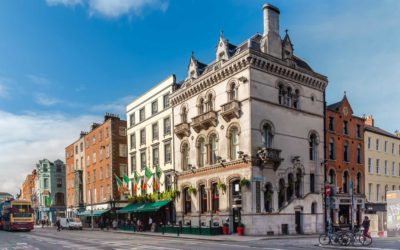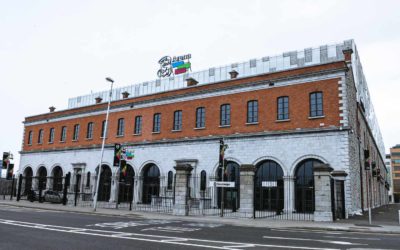“cockles and mussels, alive, alive, oh”
“Molly Malone” (also known as “Cockles and Mussels” or “In Dublin’s Fair City”) is a popular song, set in Dublin, Ireland, which has become the unofficial anthem of Dublin.
The Molly Malone statue in Grafton Street it’s just a stroll away from the Dublin Citi Hotel, just 2 minutes’ walk and it was unveiled by then Lord Mayor of Dublin, Alderman Ben Briscoe, during the 1988 Dublin Millennium celebrations, when 13 June was declared to be Molly Malone Day. The statue was presented to the city by Jury’s Hotel Group to mark the Millennium.

On 18 July 2014, the statue was relocated to Suffolk Street, in front of the Tourist Information Office, to make way for Luas track-laying work to be completed at the old location. Due to the increase in tourist foot traffic, and a common penchant for being “handsy”, the statue has been groped often enough that the bronze hue has begun to wear off on the bosom.
The History of Molly Malone
The song tells the fictional tale of a fishmonger who plied her trade on the streets of Dublin, but who died young, of a fever. In the late 20th century a legend grew up that there was a historical Molly, who lived in the 17th century. She is typically represented as a hawker by day and part-time prostitute by night. In contrast, she has also been portrayed as one of the few chaste female street-hawkers of her day.
There is no evidence that the song is based on a real woman, of the 17th century or any other time. The name “Molly” originated as a familiar version of the names Mary and Margaret. While many such “Molly” Malones were born in Dublin over the centuries, no evidence connects any of them to the events in the song.
Nevertheless, the Dublin Millennium Commission in 1988 endorsed claims made for a Mary Malone who died on 13 June 1699, and proclaimed 13 June to be “Molly Malone day.
Statue
Molly is commemorated in a statue designed by Jeanne Rynhart, erected to celebrate the city’s first millennium in 1988. Originally placed at the bottom of Grafton Street in Dublin, this statue is known colloquially as “The Tart with the Cart” or “The Trollop With The Scallop(s)”.
The statue portrays Molly as a busty young woman in 17th-century dress. Her low-cut dress and large breasts were justified on the grounds that as “women breastfed publicly in Molly’s time, breasts were popped out all over the place.”









